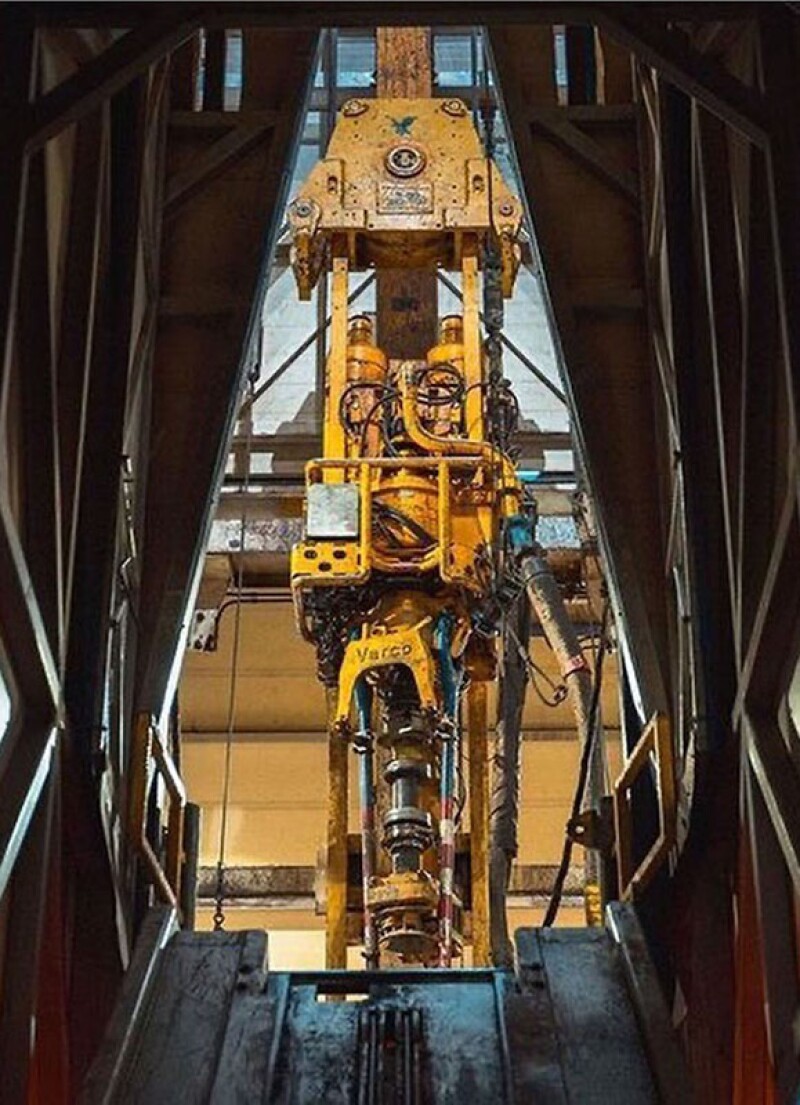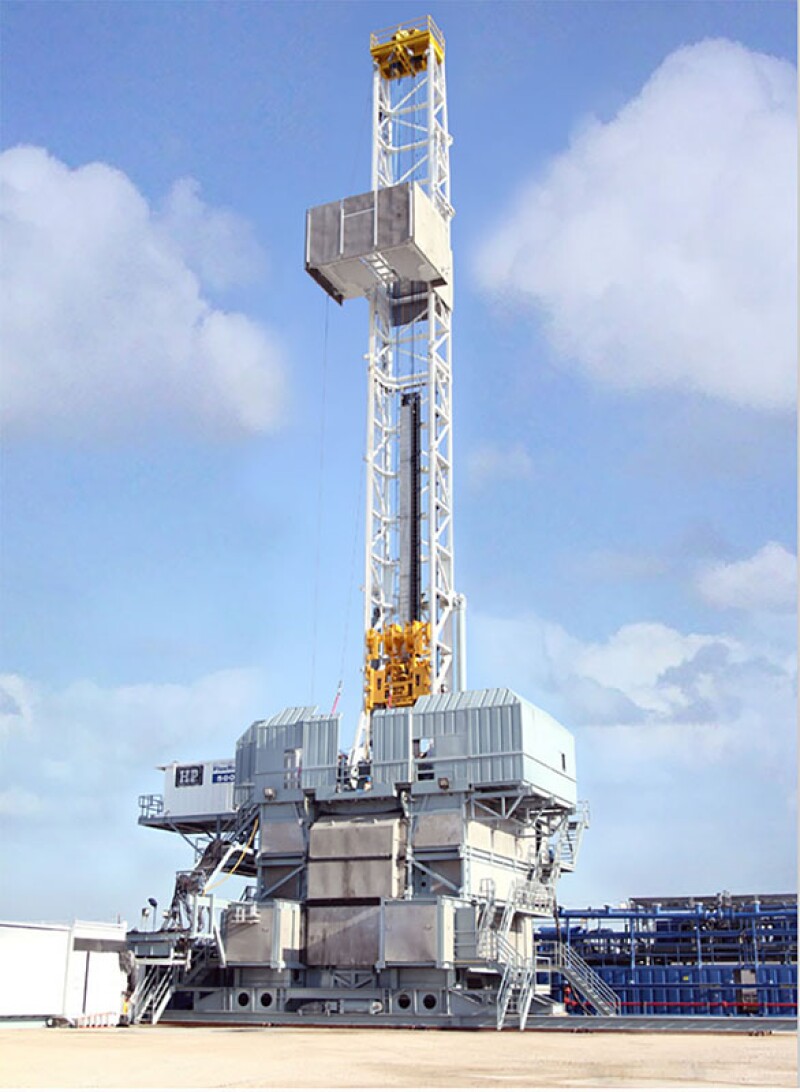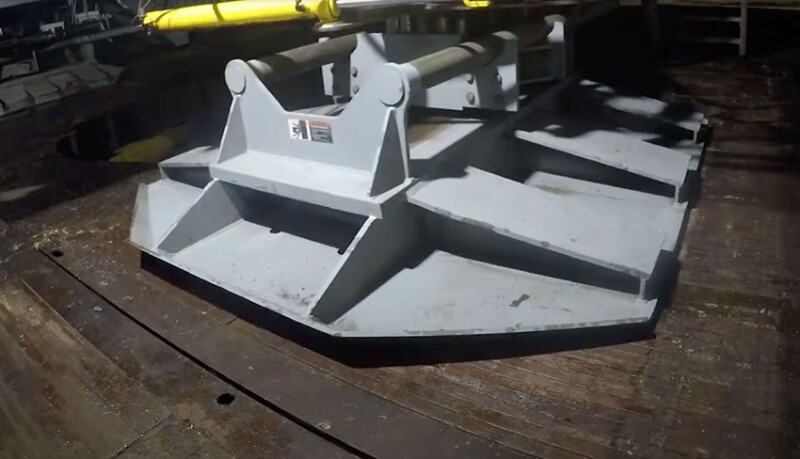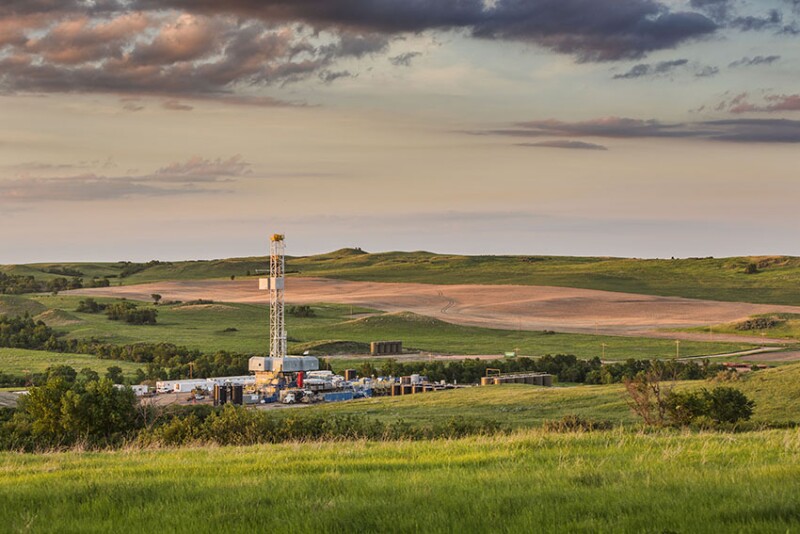The earliest land rigs used materials like bamboo and iron and were powered by animals such as horses or oxen. These rigs used percussive drilling to create the bore, repeatedly raising and dropping heavy iron bits—effective but slow. By the time Edwin Drake was drilling the Titusville well in 1859, steam engines had been introduced to help power now metal pipe down into the Earth’s crust. By the 1950s, steam-powered rigs gave way to diesel engines. The 1960s would see the advent of self-elevating rigs—the transition from derricks to mast. During the 1970s, electrical power using on-site generators was introduced to drive systems on the rig, and the advent of new downhole tools would allow drillers to directionally drill while maintaining rotation. In the mid-1980s, the first steerable drilling system was introduced.
Soon, the evolution would move from the drill floor and downhole into the doghouse (driller’s cabin). Gone were the mechanical hand brakes and foot pedal systems, replaced by touchscreens and joysticks. The land rig has come a long way.
Hoisting capability and rig-up requirements were key drivers in the design of older units rather than an ability to store materials and move. Older rig-floor configurations were modified to accommodate pipe-handling equipment instead of designed to integrate pipe-handling equipment. These units were not driven by location sizes nor multiwell pad capabilities.
Most of this would change with the coming of the new millennia, and by 2010, it would seem like new innovations would be integrated into land rig design every year—from larger variable skid systems allowing for pad and batch drilling to app-based automation driving efficiency and safety profile.
Topdrives? Onshore?
Most of what drove innovation in land rigs can be traced back to development in the offshore sector. Much of what would become standard technology on land had its roots offshore, starting with one of the most important technology transfers of the 1990s—topdrives.

“Most of us came out of offshore, and so we didn’t have preconceived ideas of what a land rig was,” said Chris Major, director—global engineering support at Helmerich & Payne (H&P). “Even before H&P went out and converted aging offshore vessels rigs over to topdrive rigs, I was putting Varco TD‑4s or Maritime Hydraulics DDM 650s on offshore rigs. But offshore topdrives were the standard. In fact, if your offshore rig didn’t have a topdrive, it couldn’t get contracts. Then we started getting into jobs with supermajors internationally, and that became the contractual standard for deep-drilling, international land rigs—the same offshore topdrives on these big land rigs. That got us thinking about the future.”
The future had the executives at H&P making some important decisions about the direction of the company. As 2000 approached, word from management was that H&P was going to be a topdrive rig company. Over the next few years, AC topdrives were installed on SCR-style rigs. Before long, the aim was to convert the entire fleet.
“People were kicking and screaming,” recalled Major. “A lot of our team didn’t want these. Even operators did not want the things. We tried to negotiate a little bit with them, just to see if we could cover the purchase, and eventually, we managed to convince them. But then, our operations folks didn’t even want the things. They saw high cost, downtime, learning curves, but we had a leadership that was committed to work through those issues and find solutions.”
Everybody questioned the move. At NOV, the prevailing thought in the mid-1990s was that there was no way topdrives would make the migration from sea to land because the land rig structures themselves couldn’t take it.

“That’s why you saw the big yellow beam up the middle of all the topdrives,” said David Reid, NOV chief technology officer/chief marketing officer. “We had to take all the load and the torque to the base of the rig. Once we worked that out, because the old Bowen unit—it was an in-line, so the mud line comes through the motor—was this very tight package. It wasn’t until we started to think about it, because we were putting them on masts on offshore rigs. Same problem, masts are not good for taking torque. Once it happened, we really didn’t think it was going to be as big a deal as it was. I mean, we did a few once we got the smaller Reliance motors, because we weren’t running through the main gearbox, which was very much the Varco-IDS type design here. These motors are sitting off the back. But once you got smaller‑package induction motors, it really changed everything.”
Topdrives brought several efficiencies to land drilling.

First, drilling with “stands” became possible. Stands are multiple joints of connected drillpipe which can be added to the drillstring at once, rather than adding a single pipe at a time.
Traditionally, drilling crews would need to add one joint (one length of pipe) to the drillstring at a time, which was time-consuming. By connecting two or three pipes into a stand beforehand, the rig could add more pipe to the drillstring in a single operation, increasing drilling speed by reducing the frequency of stopping to add pipe.
This advancement enabled the ability to trip back stands and drill using preassembled stands built offline. Additionally, drillers could now back-ream to clear and smooth the borehole.
Second was directional drilling—another innovation transfer from offshore. The addition of the topdrive to the land unit made directional drilling possible, which would become increasingly important in the 2000s when the shale boom arrived.
It was around that time that the locomotive industry began adopting AC drive technology in diesel-electric locomotives—an application that led to the birth of the AC drilling rig. Creating a drilling rig with a topdrive integrated into an AC drive system and deployed in a scalable fashion became revolutionary for the drilling industry as well. It wasn’t popular at first; however, without it, the industry would be unable to drill today’s modern wells.
“I remember being on a plane with our leadership, and my boss at the time was passing around information about some new advances in AC drive technology used on diesel locomotives,” recalled Major. “We started looking at this, and what we were thinking about was the idea of a machine that can have 100% torque and zero speed. Suddenly we were like, ‘Hey, that sounds like a hoist. That sounds like a drawworks.’”
Added Reid, “We were about 10 years behind trains. All we were doing when we went to DC, we were just picking up traction motors off the train industry. The original thought was that if they’re getting rid of these old motors, we can bring them in. The old GE 752 was on everything—your drawworks, your rotary table, your topdrive—and the idea was interchangeability. That was the logic that got them into it. The idea that we can buy secondhand, refurbished motors drove the original topdriver, but no one ever thought those would work on land.”
AC Power Opens Things Up
When the AC drilling rig was developed, it was the first purpose-built rig for pad drilling. Pad drilling was a solution for a key operational need: the construction of multiple wells from a single location.
At that time, single wells would be drilled in a row, but pad drilling has not become prevalent. An H&P rig design was engineered and coupled with manufacturing capabilities that resulted in the construction of hundreds of rigs in a relatively short amount of time. This shift in need for pad drilling combined with the new AC rig design ultimately enabled the US shale revolution.
“AC was disruptive,” said Major. “We thought about having real block control, where we have precise control. We weren’t thinking at that time about drilling apps and some of these other things we’ve since been exposed to like FinTech or soft torque on SCR type rigs. We were just thinking about having block control and feedback, precise driller control, and an air-conditioned cabin with touchscreens instead of the old brake handle on the rig floor.”
While important to the US shale boom, the initial push behind bringing AC rigs to the market was more about a general rethink about what a modern drilling rig should look like rather than by any specific need or application.
H&P would introduce its AC-powered rig design in its Flex3 rig to its FlexRig fleet—a rig no customer was asking the contractor to build. It was more about bringing game-changing technology to the fore rather than satisfying demand. The company took the risk, and the first Flex3 rigs began rolling out of the yard in 2002.

“They were very focused on performance, selling better performance,” said Reid. “Everything before that was price. They started to separate out being more expensive and being worth it and then training with crews for safety. They were starting to match where the industry was going. So, after AC, the driller’s cabin turns into an arcade game versus a hand brake. It was really the electronic driller, and once again, H&P drove it.”
The FlexRig fleets, including the later Flex4s and Flex5s, were wildly successful for H&P in the years that followed, helping the company to grow from just 3% market share in 2001 to approximately 20% market share in US land by the mid-2010s.
Walking the Walk
Introducing walking rigs to a global fleet has contributed to reducing well-cycle times by over 35% from 2016 to 2022. What was once a 3 to 5-hour release-to-spud skid, is now as low as 1½ hours using walking technology. Connected to the power supply from the backyard and increased rotational freedom ensured most walking rigs would never have to power down while transitioning from well to well.
“If you think about it, we were doing wheeled systems early on in Alaska, and it was because you were just trying to drill and move this massive rig structure that was designed to keep us all warm,” said Reid. “We were going to live on these things. They were almost like platforms on land. When you were in cold environments, it was better to walk a rig.”
Today’s walking rigs use hydraulic “legs” to move up to 500 ft across a drilling location without the need for additional heavy transportation equipment, eliminating the need to assemble and disassemble certain components. The walking legs can also adapt to different terrains, including uneven surfaces and inclines making it difficult to reach more-accessible areas.
Walking packages were developed with several scenarios in mind but were critical in addressing many of the needs of the next generation of unconventional drilling. Walking rigs allowed for wider well-row spacing and placing more rows in a single drilling area.
“What was really controlling the distances we could translate had to do with the slope on the flowline and gravity feedback to the mud systems,” explained Major. “So, we started thinking—How do we do walking? How do we use all these tracks? How do we reduce nipple-up times (the duration required to assemble or connect the various components of a drilling rig)? How do we cover most locations?
“We were still dealing with existing wellheads and trying to clear them. You have to deal with that. Then the other thing is, you’re on a pad drilling. How do we figure this out as we translate and do pipe-handling over the wells we just were on? Walking it, side-saddling it, and building in wellhead clearances are the most flexible things we can do. Then we started dealing with whether we want to be captive to flowlines. That’s why we started on our versions. We’ve got pump-back systems. We were trying to create a design that could work for nearly any pad drilling location in the US. That’s what drove it,” Major said.

Tomorrow’s Land Rig
Robotics. Artificial intelligence. Autonomous drilling. Much of what the future holds for land drilling centers on the ability of industry to harness and apply new and existing technologies in ways that will once again drive efficiency and safety. There are already robots on rigs that are making pipe connections on Permian Basin wells. In addition to providing consistency and efficiency in drilling tasks, new automated solutions allow for the removal of personnel from red zones on the drill floor.
Another area being looked at is sustainability, which could lead to more hybrid-powered units with energy storage capabilities.
The evolution will continue as the focus shifts from brawn to brains and from task to process. Today’s well programs are not one-size-fits-all; they take into account a variety of factors, including company size, geographical location, and specific characteristics such as well spacings, fracture spacings, and optimal pad sizes. New considerations are being added all the time.
Based on the continuing evolution, the future energy landscape will likely necessitate additional ways to transform the modern land drilling rig into the rig of the future. As operators increase their involvement in the energy transition, drilling capabilities must further evolve to drill geothermal wells and explore additional opportunities.
For Further Reading
IPTC 23554 Accelerating Drilling Efficiency and Consistency: A Rig-Based Approach to Exponential Drilling Program Improvements by C. Major, T. Hall, W. Stogner, and S. Kern, Helmerich & Payne.


